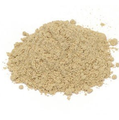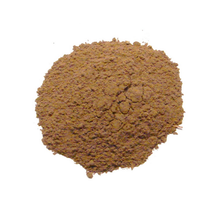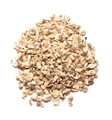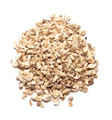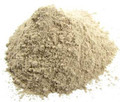 Loading... Please wait...
Loading... Please wait...- Home
- Bulk Herbs
- Herbs (B)
- Burdock Root Powder C/O
- Home
- Herbs - Certified Organic
- A-C
- Burdock Root Powder C/O
Product Description
Burdock Root, Powder
Also Known As - Arctium lappa
Origin - Certified Organic, USA
Overview - This plant is very widely distributed and can be found growing in field borders, roadsides, and empty spaces across China, Europe, Britain, North America and several other landmasses. Most people are familiar with the flowers of Burdock which form globe shaped clusters around the top of the stem covered with a dense alignment of stiff “hooks” that will cling to anything they touch. The root is very delicious and is served in Chinese, Korean, and other Asian dishes prepared by peeling and cooking the whole root. The leaves of some species can reach 3 feet in diameter and produce very large roots. Burdock is a member of the Sunflower or Compositae family and is sometimes called beggar’s buttons, or thorny burr.
Medicinal Uses – Internally,Burdock is a versatile plant frequently classified by herbalists as an alterative, a plant, which among other things influences the blood and lymph. It has bitter principles, which encourage healthy digestion and appetite. Burdock also supports Healthy and Vital Skin with a clear complexion. One of the ways it functions to do so is by promoting normal liver function and by supporting the detoxification process in the body. Externally, Burdock can be used topically for eczema, acne and psoriasis. It is used as a rinse to get rid of dandruff and to fight hair loss.
Active Constituents - flavonoids; gobosterin, essential oil, fatty oil, bitter glycosides, alkaloids, tannins, polyacetylenes, inulin, resin and mucilage.
Other Uses - Burdock root is eaten in Japan as a vegetable. They call it gobo. The herb is mixed with dandelion to make a soft drink in the United Kingdom. Its seeds were the inspiration for Velcro, after George de Mestral of Switzerland looked at how the seeds attached themselves to his clothes.
Parts Used - The dried root from a first year's growth is normally used, however sometimes the leaves and fruit are used as well.
Precautions - Pregnant women should avoid burdock, as it may cause damage. If you are sensitive to ragweed, daisies or chrysanthemums, you may have a similar reaction to it. The herb is a diuretic, so if you are suffering from dehydration, it would be best to avoid. Do not gather in the wild or buy them from sources you are unsure about since the root resembles belladonna and deadly nightshade root very closely.
- Do not mix with diuretic and diabetic medications due to possible interactions.
Preparation and Dosage - You can get the roots either fresh or dried. Supplements come in powdered form, decoctions, tinctures and extracts.
- For capsules, take 1 to 2 grams three times per day.
- For dried root, cover 2 to 6 grams in 2/3 cup of boiling water for 10 to 15 minutes. Strain and drink this solution three times per day. This infusion can also be used as a wash or poultice for skin problems like eczema or wounds. Do not use this on an open wound.
- For tincture, take 2 to 8 ml three times per day. The tincture may also be applied topically.
- For extract, take 2 to 8 ml three times per day.
- For tea, steep 2 to 6 grams in 2 cups of water. Drink three times per day.
Disclaimer -These products are dietary supplements and are not intended to diagnose, treat cure or prevent any disease. Reviews are not intended as a substitute for appropriate medical care or the advice of a physician or another medical professional. Actual results may vary among users. Mountain Maus Remedies LLC makes no warranty or representation, expressed or implied, as to the accuracy or validity of the information contributed by outside product review submissions, and assumes no responsibility or liability regarding the use of such information. The information and statements regarding the dietary supplements have not been evaluated by the Food and Drug Administration. If you have a medical condition or disease, please talk to your health care provider. If you are currently taking a prescription medication, you should work with your health care provider before discontinuing any drug or altering any drug regimen, including augmenting your regimen with dietary supplements. Do not attempt to self-diagnose any disease or ailment based on the reviews and do not use the information contained herein for diagnosing or treating a health problem or disease. Proper medical care is critical to good health. If you have a health concern or suspect you have an undiagnosed sign or symptom, please consult a physician or health care practitioner.








